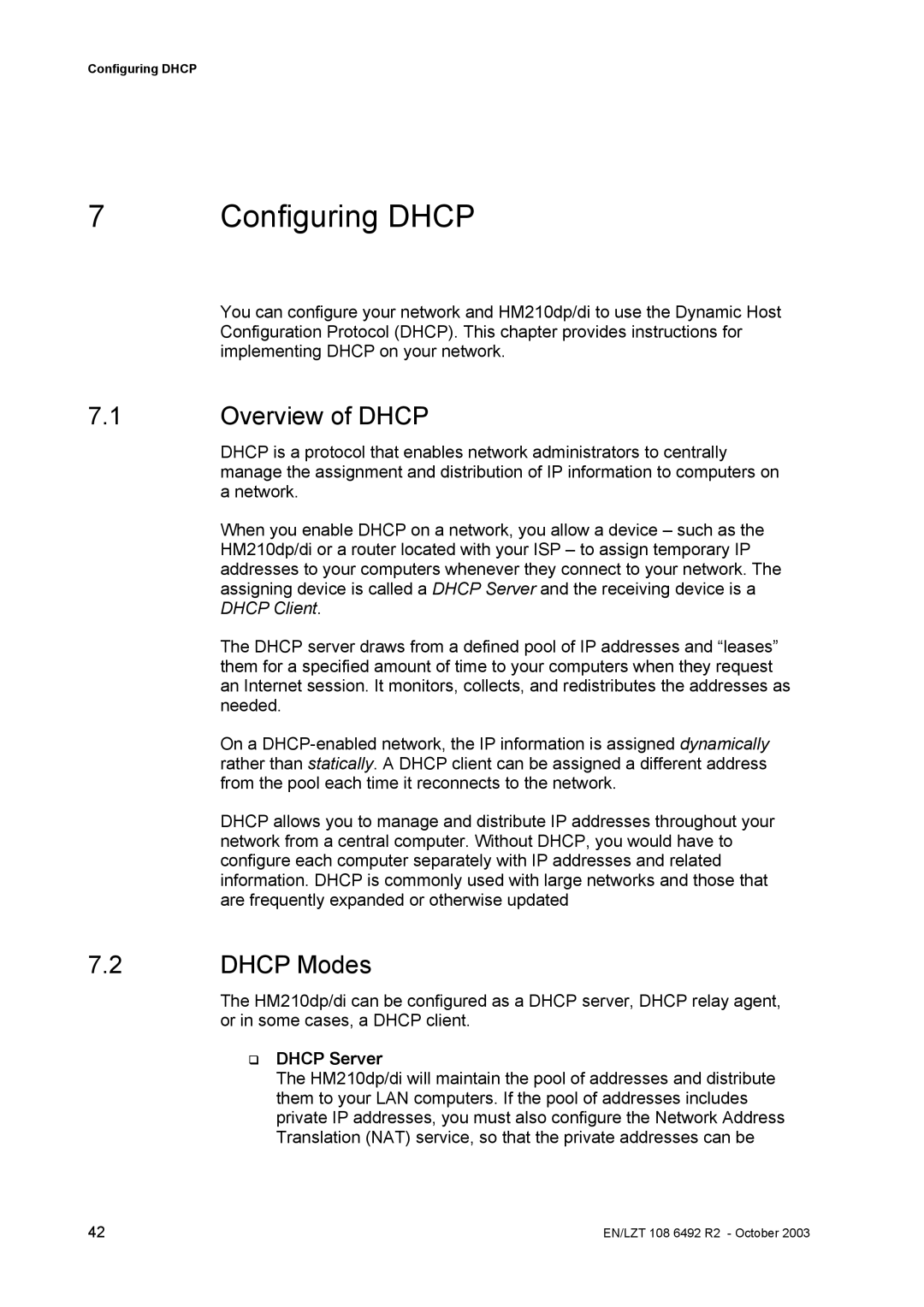Configuring DHCP
7 Configuring DHCP
You can configure your network and HM210dp/di to use the Dynamic Host Configuration Protocol (DHCP). This chapter provides instructions for implementing DHCP on your network.
7.1Overview of DHCP
DHCP is a protocol that enables network administrators to centrally manage the assignment and distribution of IP information to computers on a network.
When you enable DHCP on a network, you allow a device – such as the HM210dp/di or a router located with your ISP – to assign temporary IP addresses to your computers whenever they connect to your network. The assigning device is called a DHCP Server and the receiving device is a DHCP Client.
The DHCP server draws from a defined pool of IP addresses and “leases” them for a specified amount of time to your computers when they request an Internet session. It monitors, collects, and redistributes the addresses as needed.
On a
DHCP allows you to manage and distribute IP addresses throughout your network from a central computer. Without DHCP, you would have to configure each computer separately with IP addresses and related information. DHCP is commonly used with large networks and those that are frequently expanded or otherwise updated
7.2DHCP Modes
The HM210dp/di can be configured as a DHCP server, DHCP relay agent, or in some cases, a DHCP client.
DHCP Server
The HM210dp/di will maintain the pool of addresses and distribute them to your LAN computers. If the pool of addresses includes private IP addresses, you must also configure the Network Address Translation (NAT) service, so that the private addresses can be
42 | EN/LZT 108 6492 R2 - October 2003 |
